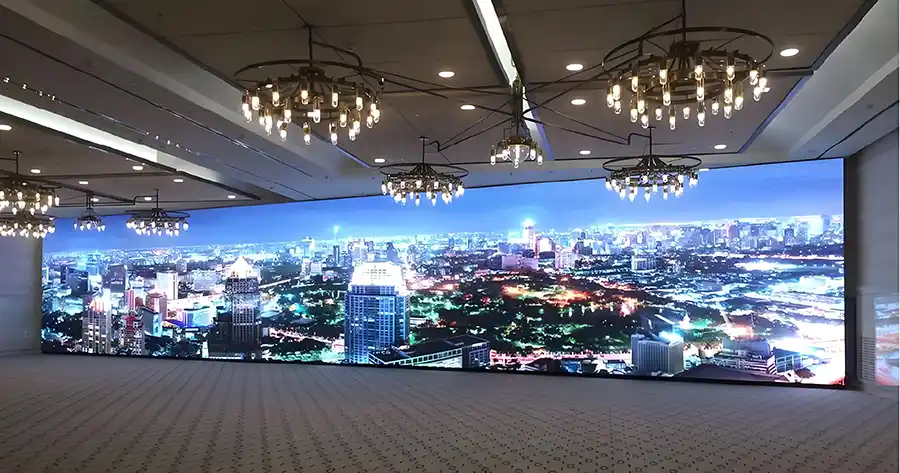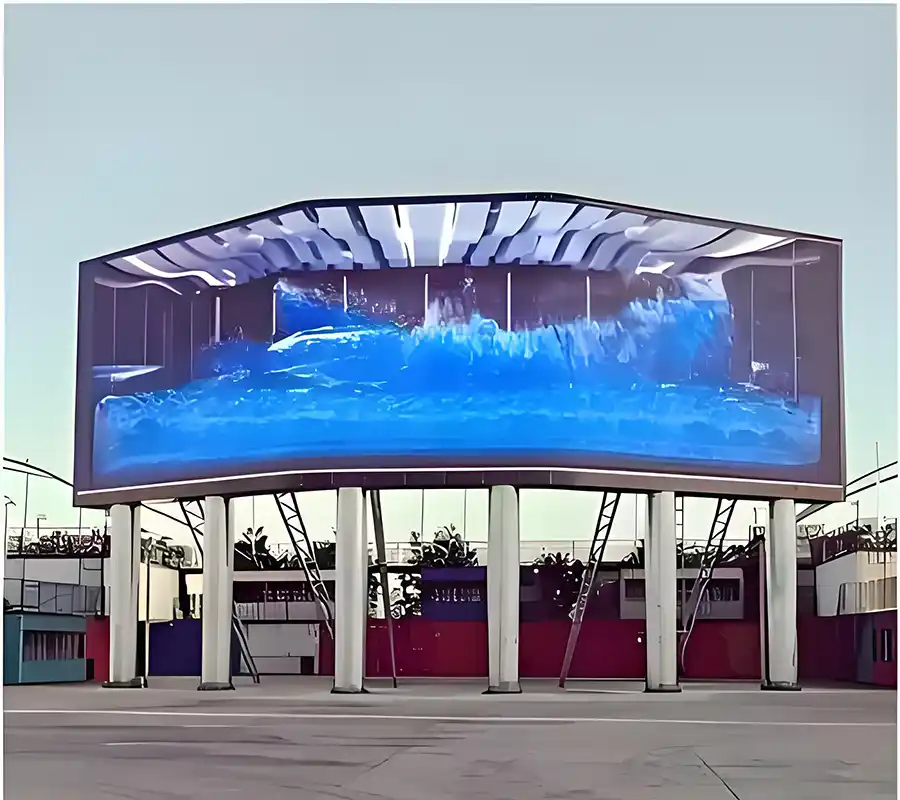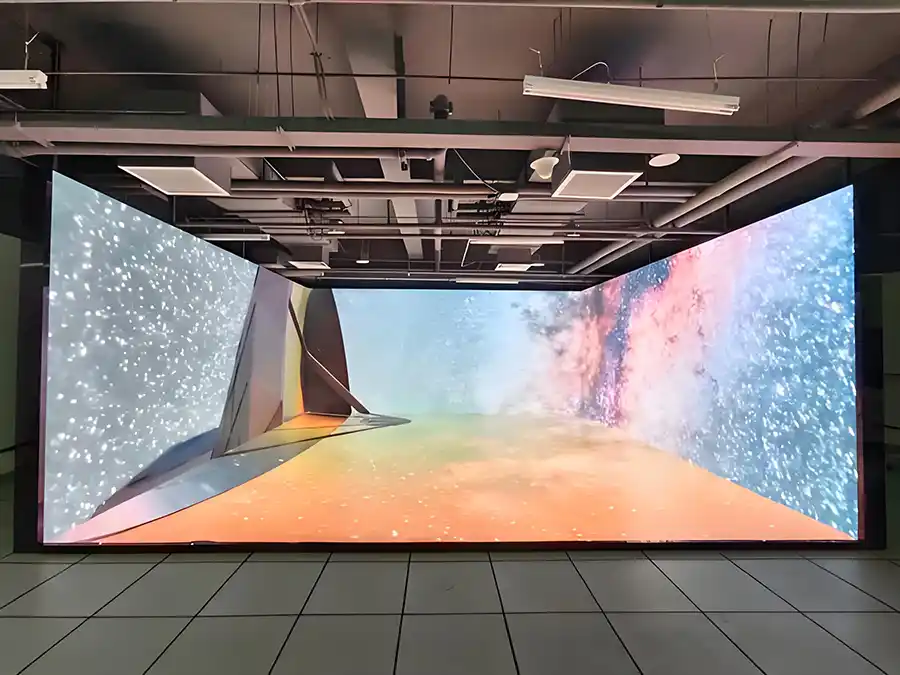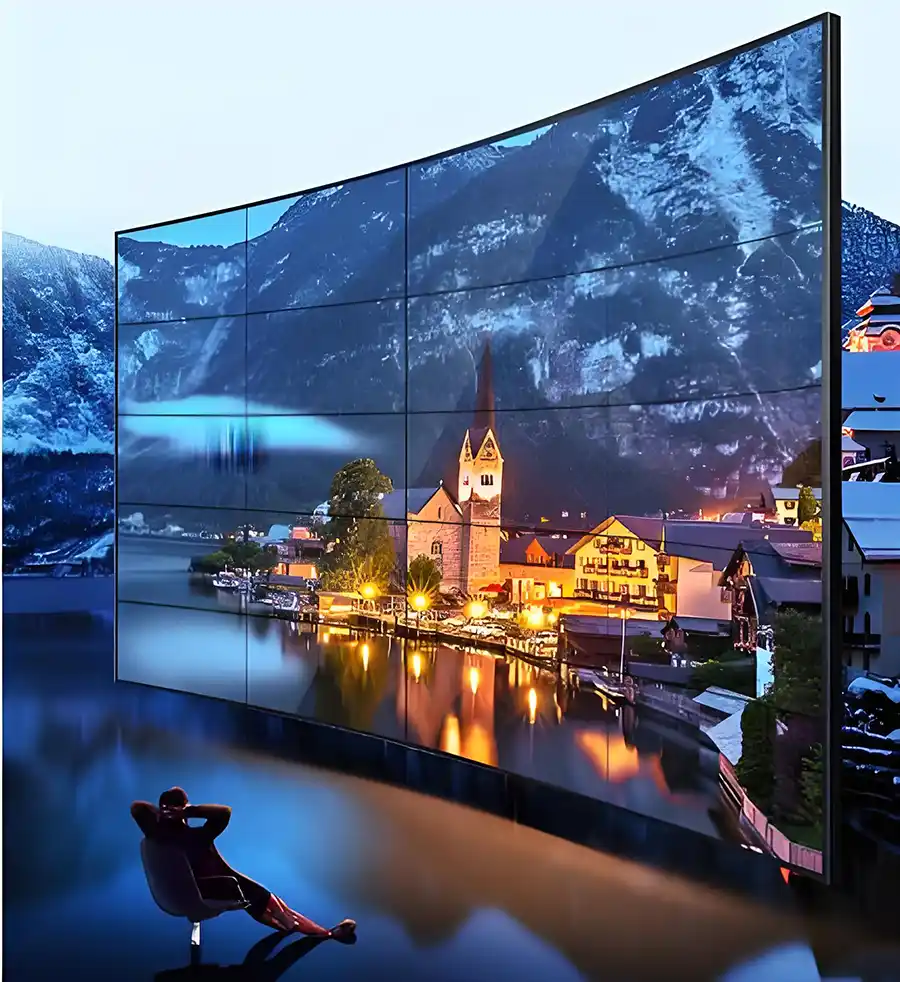In the ever-evolving world of filmmaking and content creation, virtual production has become a revolutionary game-changer. From Hollywood blockbusters to commercial advertising, music videos, and even corporate presentations, virtual production techniques are transforming the way stories are told. At the heart of this innovation lies one powerful piece of technology: the LED-Wand.
Whether you're a director, cinematographer, studio owner, or content creator, chances are you're either already exploring virtual production or considering it seriously. But one of the first and most pressing questions that comes up is: what is the virtual production LED wall price? And more importantly, what factors affect it?
Understanding the price of a virtual production LED wall is not just about comparing numbers on a spec sheet. It’s about evaluating performance, long-term value, customization, and compatibility with your creative vision. This article breaks down everything you need to know before you make the investment.

Before diving into the price breakdown, it’s helpful to understand what a virtual production LED wall actually is. In simple terms, it’s a high-resolution, modular screen system made up of LED panels, used to display real-time 3D environments powered by game engines like Unreal Engine.
These walls act as dynamic, immersive backdrops that replace traditional green screens. Unlike static backdrops, LED walls respond to camera movement with proper parallax and lighting, thanks to real-time rendering and motion tracking. This allows actors and crew to interact with digital environments on set in real time, reducing post-production costs and improving realism.
The LED wall itself is only one part of the system. The total cost of a virtual production setup depends on several other elements, including:
LED panels (the wall itself)
Graphics workstation(s) with GPU-heavy capabilities
Camera tracking systems
Sync hardware and servers
Lighting systems
Unreal Engine or similar software licensing
Installation and rigging
Cooling and power infrastructure
Because the LED wall is the most visible and central part of this setup, its cost forms a significant portion of the budget—but it's important to budget for the whole system if you're building from scratch.

Let’s get into numbers. The price of a virtual production LED wall can range from $150,000 to well over $2 million, depending on scale, resolution, brand, and configuration.
Here’s a rough breakdown:
Scale | Size Example | Estimated Price Range |
Entry-Level | 6m x 3m | $150,000 – $250,000 |
Mid-Tier | 12m x 4m | $400,000 – $800,000 |
High-End (Full Volume) | 20m x 6m+ (curved) | $1.2 million – $2.5 million+ |
Prices vary widely because there are many customizations possible—from pixel pitch to refresh rate, from flat to curved screens, and from fixed to modular mobile walls.
1. Pixelabstand
This is one of the most critical specs. Pixel pitch refers to the distance between each pixel on the LED panel. The smaller the pixel pitch, the higher the resolution—and the higher the price.
1.2mm to 2.6mm is typically used for film production.
Lower pixel pitch = sharper image = higher cost.
For example, a 1.5mm pitch LED wall will cost significantly more than a 2.6mm wall of the same size.
2. Panel Quality and Brand
Top-tier manufacturers like ROE Visual, INFiLED, Unilumin, and Absen offer cinema-grade LED panels with high color accuracy, refresh rates above 3840Hz, and superior contrast ratios. These premium panels come with a higher price tag but deliver unmatched visual quality.
3. Refresh Rate and Bit Depth
Smooth motion rendering and accurate color reproduction are essential for virtual production. Higher refresh rates reduce flicker and improve camera sync. Likewise, higher bit depth panels (like 16-bit or 22-bit) provide more color precision.
Higher refresh rate panels cost more but are necessary for cinematic shooting.
4. Curve vs. Flat Walls
Curved walls are preferred in many full-volume productions because they allow for more immersive environments and better light behavior. However, curved panels and the structural rigging required to support them add to the cost.
5. Structural Support and Rigging
You’ll need a strong and stable support system that’s safe for crew and actors. This includes trussing, mounts, rigging, and sometimes motorized or mobile setups. Rigging for a large curved wall can cost tens of thousands of dollars.
6. Installation and Calibration
Professional installation is crucial. Calibration ensures color and brightness consistency across all panels. This is not a DIY job, and the service can cost anywhere from $10,000 to $50,000, depending on complexity.
7. Warranty and Service
Premium LED walls come with long-term warranties and on-site support. While this adds to the upfront cost, it can save you downtime and repair costs in the long run.

At first glance, green screen production might seem cheaper. And it is—initially. But virtual production with LED walls offers long-term cost savings and creative flexibility.
Besonderheit | Green Screen | LED-Wand |
Real-time visualization | ❌ | ✅ |
Post-production VFX cost | High | Lower |
On-set lighting accuracy | Poor | Excellent |
Actor immersion | Low | High |
Travel to locations | Often required | Usually unnecessary |
Initial investment | Low | High |
In vielen Fällen stellen Produktionen fest, dass sich die Investition in LED-Wände bereits nach wenigen Projekten aufgrund der Einsparungen bei Reisekosten, Bühnenbau und VFX-Stunden auszahlt.
Mieten oder Kaufen: Was ist sinnvoller?
Nicht jedes Studio oder jeder Filmemacher muss eine komplette LED-Wand kaufen. Für kleinere Studios, Agenturen oder Indie-Filmemacher kann das Mieten eine clevere Möglichkeit sein, Zugang zu High-End-Technologie zu erhalten, ohne die volle Kapitalinvestition tätigen zu müssen.
Mietkosten:Eine hochwertige LED-Wandbühne kann gemietet werden für5.000–25.000 USD und mehr pro Tag, je nach Größe und Leistungen.
Betriebskosten:Der Kauf ist sinnvoller, wenn Sie planen, es regelmäßig zu nutzen oder es anderen als Dienstleistung anzubieten.
Einige Studios entscheiden sich für ein Hybridmodell: Sie besitzen eine kleinere LED-Wand für den häufigen Gebrauch und mieten größere Setups für große Produktionen.

1. Disneys The Mandalorian
Der vielleicht bekannteste Anwendungsfall,The MandalorianFür die Produktion wurde eine um 270 Grad gebogene LED-Wand namens „The Volume“ von ILM verwendet. Die Investition war enorm, ermöglichte es der Show jedoch, fremde Planeten zu filmen, ohne das Studio verlassen zu müssen. Dies sparte Millionen an Drehortkosten und setzte einen neuen Branchenstandard.
2. XR-Bühnen in Asien
Studios in China, Südkorea und den Vereinigten Arabischen Emiraten setzen derzeit verstärkt auf virtuelle Produktionsbühnen. Viele dieser Einrichtungen verfügen über LED-Wände chinesischer Hersteller wie YES TECH und Leyard, deren Panels kostengünstig sind, ohne die Kinoqualität zu beeinträchtigen.
Der Kauf in China kann auch zu erheblichen Einsparungen führen – oft20–40 % niedriger– mit Großbestellungen und Optionen zur lokalen Montage.
3. Handelsvertretungen und Events
Nicht nur in Hollywood. Werbeagenturen und Live-Event-Produzenten setzen auf LED-Wand-Produktion für TV-Spots, Konzerte und Produkteinführungen. Diese Setups sind in der Regel kleiner, aber hochmobil und modular.
Kaufen Sie nicht zu viel Pixelabstand.Passen Sie die Auflösung an Ihre Kamera und Aufnahmeentfernung an.
Investieren Sie in Schulungen.Stellen Sie Bediener ein oder schulen Sie sie, die mit der Unreal Engine und der Kameraverfolgung vertraut sind.
Berücksichtigen Sie Strom und Kühlung.Hochleistungs-LED-Wände erzeugen Wärme und erfordern eine zuverlässige Infrastruktur.
Modulare Aufbauten ermöglichen Skalierung.Beginnen Sie mit einer kleinen Menge und fügen Sie dann weitere Panels hinzu, wenn Ihr Produktionsbedarf steigt.
Wenn Sie es mit der Erstellung von Inhalten auf professionellem Niveau ernst meinen,Preis für virtuelle Produktion LED-Wandist eher eine Investition als eine Ausgabe. Es ermöglicht Regisseuren, in jeder Umgebung und unter allen Lichtbedingungen zu drehen, ohne das Studio verlassen zu müssen. Es reduziert den Bedarf an komplexen Postproduktionsabläufen und bindet das gesamte Kreativteam – Schauspieler, Regisseure und Kameraleute – in den Echtzeitprozess ein.
Ja, die Anschaffungskosten sind hoch. Aber das galt auch für Filmkameras, Drohnen und digitale Schnittplätze, als sie erstmals auf den Markt kamen. Heute sind sie unverzichtbare Werkzeuge. Dasselbe gilt für LED-Wände.
Virtuelle Produktion ist nicht die Zukunft. Sie ist die Gegenwart – und sie definiert die Wirtschaftlichkeit und Kreativität des visuellen Geschichtenerzählens neu.
Wenn Sie Hilfe beim Vergleich bestimmter Modelle oder bei der Beschaffung von LED-Wandlösungen von zuverlässigen Lieferanten benötigen – insbesondere von solchen mit günstigeren Preisen aus Produktionszentren wie China –, finden Sie viele Beratungsunternehmen und AV-Integratoren, die sich mittlerweile auf den Aufbau individueller virtueller Produktionsbühnen spezialisiert haben. Der richtige Partner kann Ihnen helfen, Leistung und Preis zu optimieren.
Heiße Empfehlungen
heiße Produkte
Holen Sie sich sofort ein kostenloses Angebot!
Sprechen Sie jetzt mit unserem Vertriebsteam.
Wenn Sie an unseren Produkten interessiert sind, kontaktieren Sie uns bitte umgehend
Kontaktieren Sie unser Vertriebsteam, um individuelle Lösungen zu finden, die perfekt auf Ihre Geschäftsanforderungen zugeschnitten sind, und um alle Ihre Fragen zu beantworten.
E-Mail-Adresse:info@reissopto.comFabrikadresse:Gebäude 6, Huike Flat Panel Display Industrial Park, Nr. 1, Gongye 2nd Road, Shiyan Shilong Community, Bao'an District, Shenzhen, China
WhatsApp:+86177 4857 4559